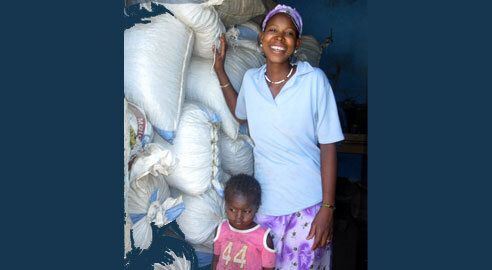The poster image of drought - the caked brown dirt and withered crops - could easily be mistaken for some part of Africa had the caption not read 'USA'. The relatives of a colleague are on the frontline of this drought - said to be the worst in half a century.
"I know my relatives in Kansas are having a very hard time, with no water on their farms, crops dead and cattle sold at low prices and a good number are hauling water in for their personal needs," says his email which just popped up on my screen.
Even though he's not a farmer, he intimately understands their plight because he faces it daily in Burkina Faso - that's a tiny landlocked country in West Africa, hedged in by Mali and Niger (both of which have been in the news quite often), Ghana and Nigeria.
Burkina is slightly (29%) larger than Kansas and it too is facing drought, dead crops, knocked down cattle prices and people having to fetch water from many miles away.
Melting pot
Unlike Kansas, however, Burkina farmers are affected by a few more things in the mix.
They are sharing their sparse resources with their neighbours who are fleeing fighting in their country. The number of Malian refugees in Burkina has now passed the 100,000 mark - the largest number of any other country in West Africa. For each refugee, there is an average of five heads of cattle that have come with them. These thirsty animals can dry up an irrigation reservoir in just a few days.
With bank balances running low or at zero, affected Burkina parents have taken their children out of school as they are unable to afford the school fees and sold other assets to keep their 'head above water'. Family members who left in search of greener pastures in Libya, Liberia and Cote d'Ivoire have returned home, fleeing from the Arab Spring and other political violence, with thin wallets.
And if that wasn't bad enough, food prices are 70% higher than last year. Those prices could rise again depending on how two things looming on the horizon develop: a locust infestation - thanks to the Arab Spring - which is the most serious since 2005 and the impact of the American drought itself on global food availability.
Global domino effect
The American drought is not just an American problem. It threatens a recurrence of the 2008 global food crisis, when soaring prices set off riots and unrest to parts of Africa, the Middle East, and Latin America, food experts warn.
If this happens, it will be felt particularly hard by families that make up the 18 million people in the Sahel already reeling from the worst food crisis in three years.
Other countries are also feeling the pinch.
India, for example, is now beginning to use the "d" word because monsoon rains are 22% below average. New Delhi, already battling to contain double-digit food inflation, now faces further price increases due to food shortages for its 1.2 billion people, some 42 percent of whom live in poverty.
In Russia the government is poised to intervene in their drought-affected grain market, by selling grain from inventories to control prices in the worst-hit regions.

A bountiful harvest in lean times using drought-resistant crops - Plan Mali
The global picture looks bleak and the prognosis, by climate change scientists, makes for very pessimist reading. However, Plan International, the global children rights organisation, is looking to beat nature at its own game. It has combined science, market strategy and education to ensure that communities in which it works can rise above the crisis.
For example, in Mali, Plan has introduced drought-resistant groundnuts which are a valuable agricultural commodity. The communities are planting the nuts and reaping rewards of improved livelihoods and better bank balances. It isn't rocket science. It has been practiced in Peru and elsewhere for years. Whenever an El Niño is forecast, Peruvian farmers on the Pacific coast switch to drought resistant crops and stay in business.
Combating high food prices isn't always so complex either. Plan's communities in Niger, for example, build and manage community granaries to store cereal and grain. When the market prices increase, the cereal banks are opened to the market. Profits are invested into the communities - building health centres and schools. Community members are allowed to purchase from the cereal bank at preferential rates.
Farmers in the Sahel have been on the receiving end of drought, pestilence and conflict for a long time. Systematically, foreign aid and international NGOs such as Plan are providing the impetus for them to lift themselves out of poverty. If the trend continues, the future looks very promising. They could adapt to their changing environment, swimming above the circumstances rather than being swept away with the tide.
